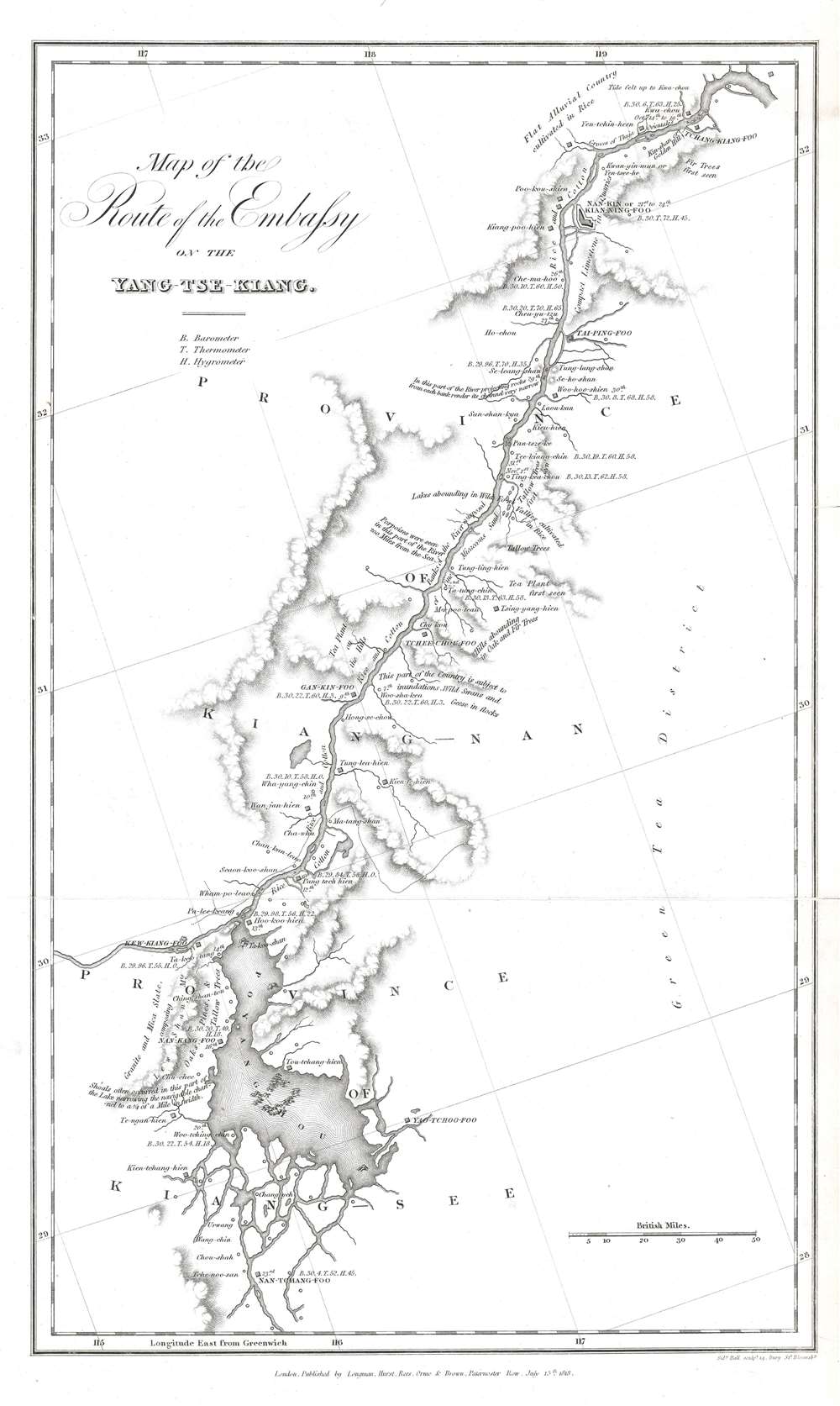1818 Hall Map of the Yangtze River, China, and the Amherst Embassy
AmherstEmbassyYangtze-hall-1818
Title
1818 (dated) 16.5 x 10 in (41.91 x 25.4 cm) 1 : 1408000
Description
The Amherst Embassy
The British Crown sent William Pitt Amherst, 1st Earl Amherst (January 14, 1773 - March 13, 1857) as ambassador extraordinary to China's imperial court in 1816. Upon his arrival in China, he was met with some hostility and told that in order to be admitted to the Jiaqing Emperor's presence, it would be necessary for him to perform the kowtow (a reverential ritual done before the Chinese emperor in which one kneels and then bows so low that their forehead touches the floor). After receiving advice from the officials who accompanied him, Amherst refused to kowtow. He did offer one possible alternative, that an admission be made that the same reverence was owed to the British sovereign by Chinese when in their presence, just as Macartney had done in 1793. This stipulation was denied, and Amherst was refused entry into Beijing (Pekin), making his mission a failure. He and his party then set off south to Guangzhou (Canton) to sail back to Britain. This excursion overland was arranged before Amherst and his party left the Alceste after arriving in China. After meeting the Alceste in Guangzhou, she wrecked off Indonesia and the survivors were finally rescued from Batavia. This second ship stopped at St. Helena, where Napoleon had been exiled, and Amherst met the exiled French emperor. Amherst finally arrived back in England in 1817.Publication History and Census
This map was engraved by Sidney Hall and published by Longman, Hurst, Rees, Orme, and Brown in Clarke Abel's book Narrative of a Journey in the Interior of China in 1818. Both the map and the book are scarce on the market, but the book is well represented in institutional collections.Cartographer
Sidney Hall (1788 - 1831) was an English engraver and map publisher active in London during the late 18th and early 19th centuries. His earliest imprints, dating to about 1814, suggest a partnership with Michael Thomson, another prominent English map engraver. Hall engraved for most of the prominent London map publishers of his day, including Aaron Arrowsmith, William Faden, William Harwood, and John Thomson, among others. Hall is credited as being one of the earliest adopters of steel plate engraving, a technique that allowed for finer detail and larger print runs due to the exceptional hardness of the medium. Upon his early death - he was only in his 40s - Hall's business was inherited by his wife, Selina Hall, who continued to publish under the imprint, "S. Hall", presumably for continuity. The business eventually passed to Sidney and Selina's nephew Edward Weller, who became extremely prominent in his own right. More by this mapmaker...

